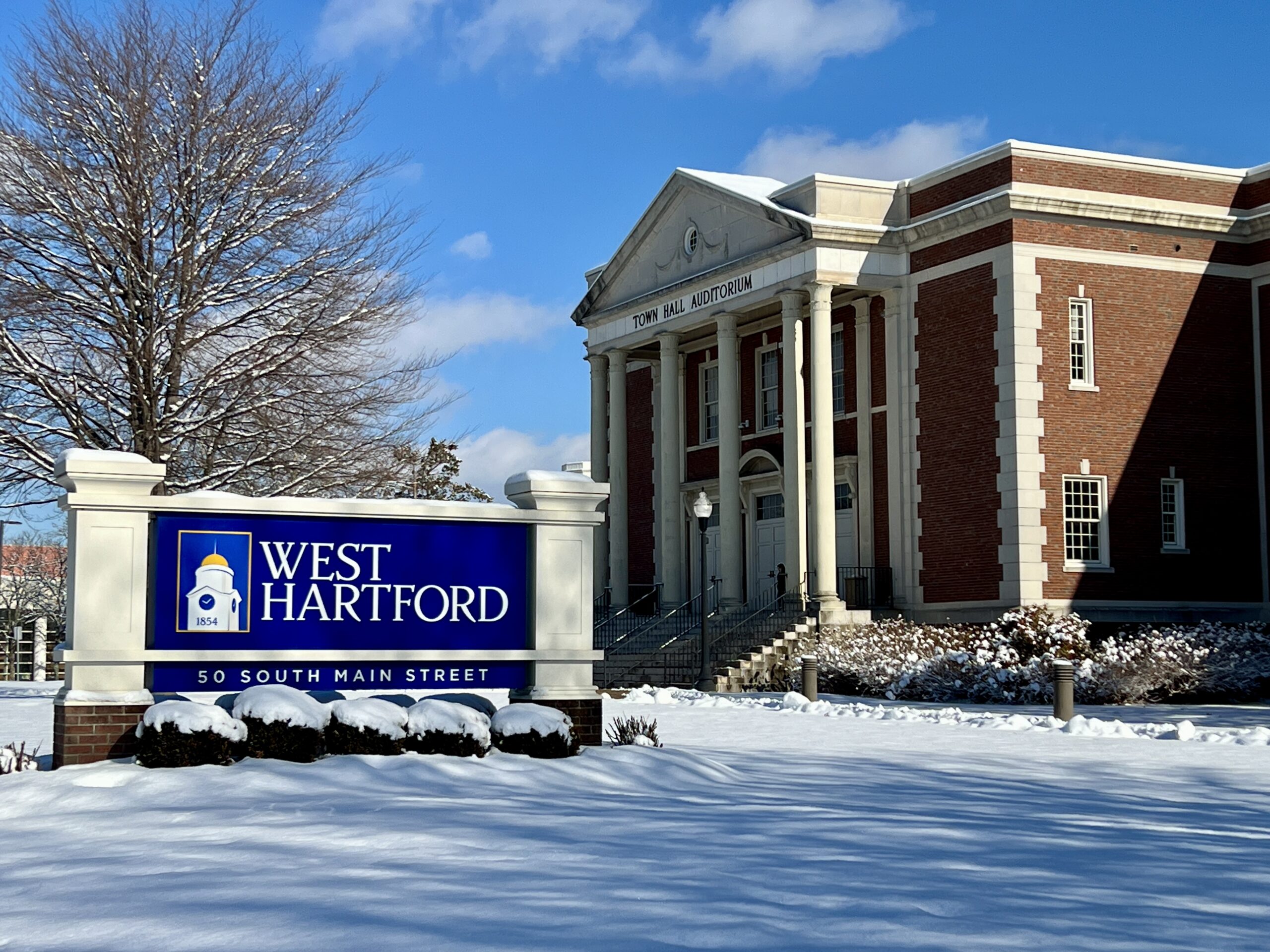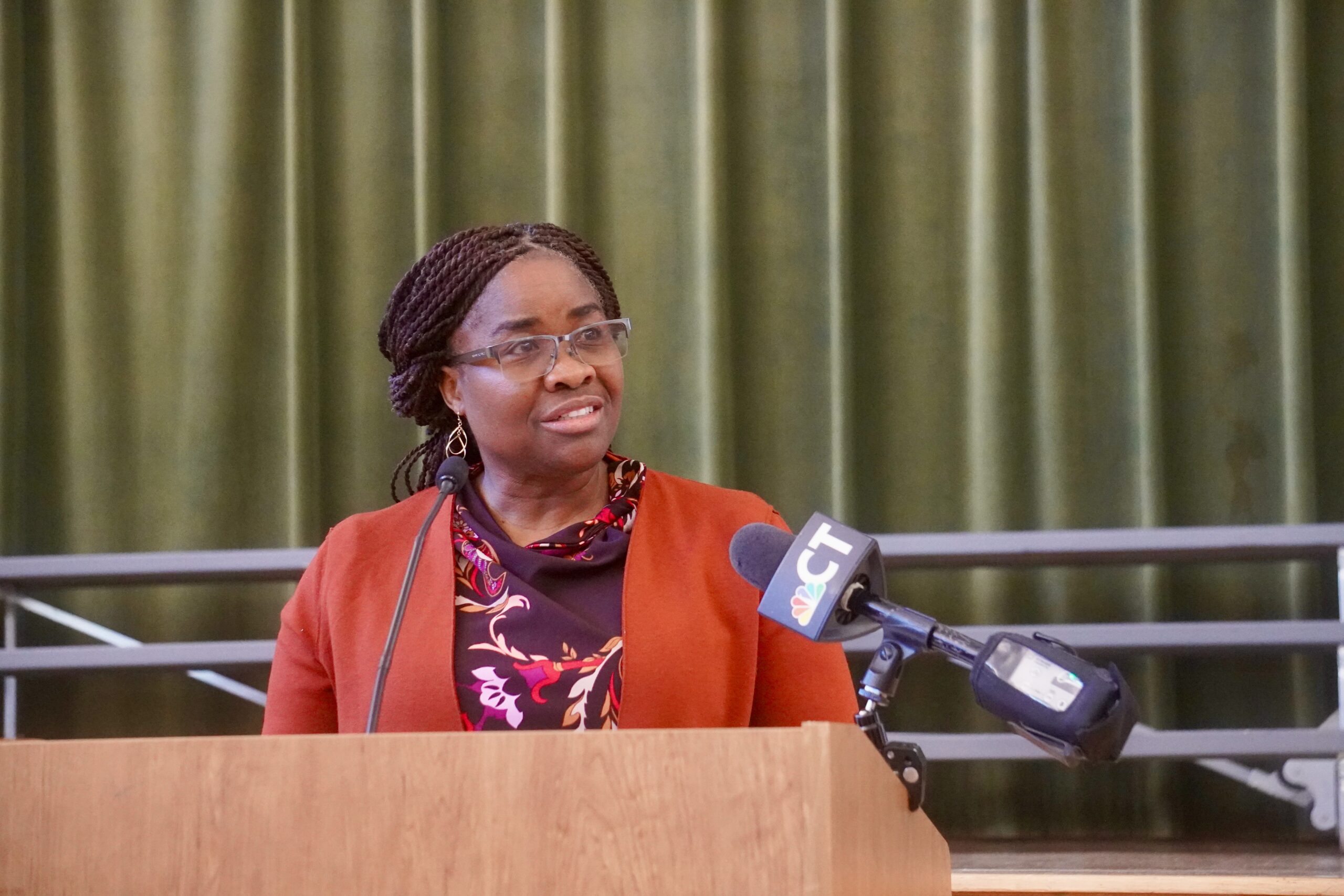West Hartford Students Still Making Music, with Modifications

Audio By Carbonatix
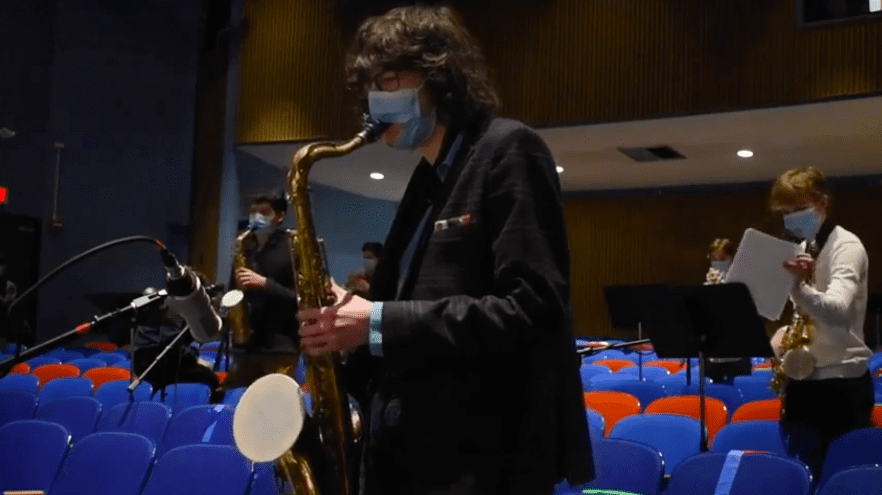
Hall High School Jazz Band provided the prelude to West Hartford's 25th Annual Martin Luther King Day celebration. Screenshot
With distancing and masks, and special filters, music programs at West Hartford’s Conard and Hall high schools are operating amid the pandemic.
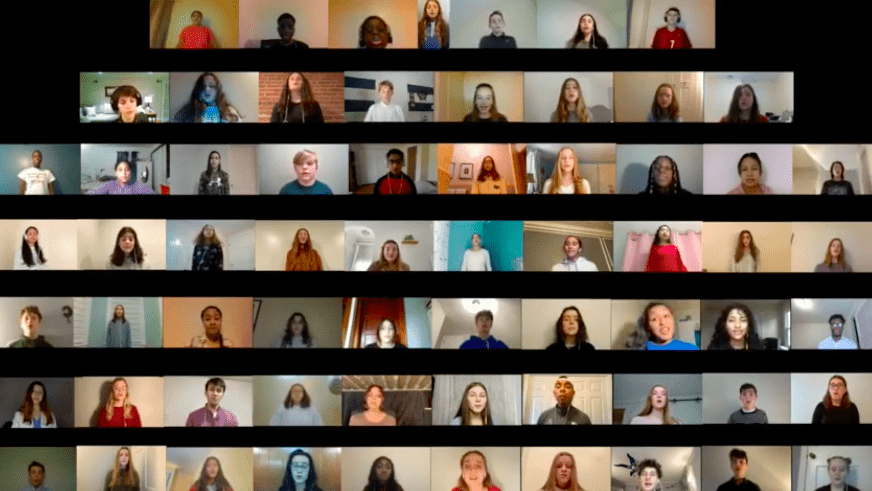
The annual singing of ‘We Shall Overcome’ to end West Hartford’s 25th Annual Celebration of the Life of Martin Luther King Jr. was performed by choirs from Conard, Hall, Bristow, Sedgwick, and King Philip, and the audience was invited to join them from their homes. Screenshot (we-ha.com file photo)
By Mackenzie McDonald
In the midst of the COVID-19 pandemic, West Hartford Public Schools’ band and choir programs have undergone significant changes. Despite facing myriad challenges, music teachers at Hall and Conard remain optimistic about their students’ ability to persevere through difficult circumstances in order to come together and make music.
In March 2020, the pandemic dealt its first devastating blow to the music program at Hall High School.
“Our big show for the year called Pops ’n Jazz was supposed to open the night they closed every school across the state of Connecticut,” explained Hall band teacher James Antonucci. “That was a tremendous bummer for the kids, because they never got to actually premiere their show.”
To this day, the Pops ‘n Jazz set from last March remains in place in the Hall auditorium.
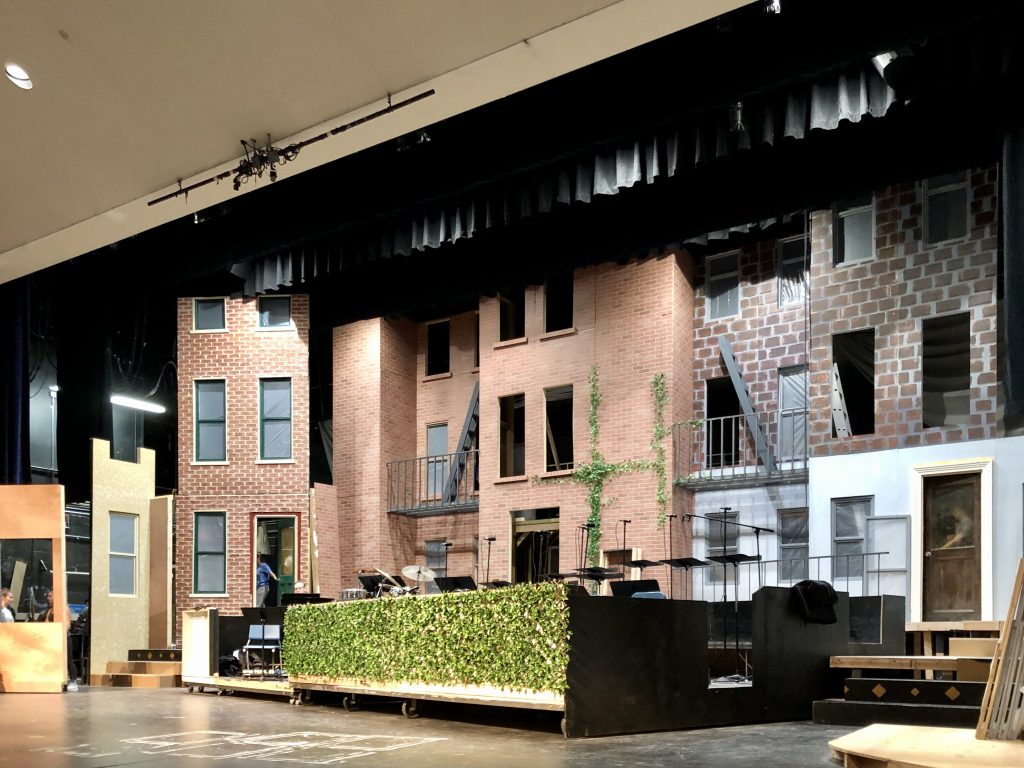
Hall High School Pops ‘n Jazz rehearsal, 2020. Photo credit: Ronni Newton (we-ha.com file phot)
The beginning of the current school year was similarly disappointing for members of the music programs at both schools, as students were unable to sing or play instruments in person for the first month and a half of classes.
“The town took the approach of making sure that it was completely safe for students to be able to sing and play live,” said Conard choir teacher Sam Eurich. “They watched the data from around the country and the rest of the surrounding towns, and eventually they realized that it was not a heightened risk as long as certain safety precautions are followed.”
Under the new guidelines, students were allowed to perform in person again starting in mid-October, albeit with specialized personal protective equipment and strict space restrictions.
“The students are 6 feet apart from each other side by side, and 9 feet apart from each other front to back,” said Eurich. “In the instrumental world, the band program is a little more spaced out. Currently they are 12 feet in each direction in order to make sure that the aerosols disperse correctly.”
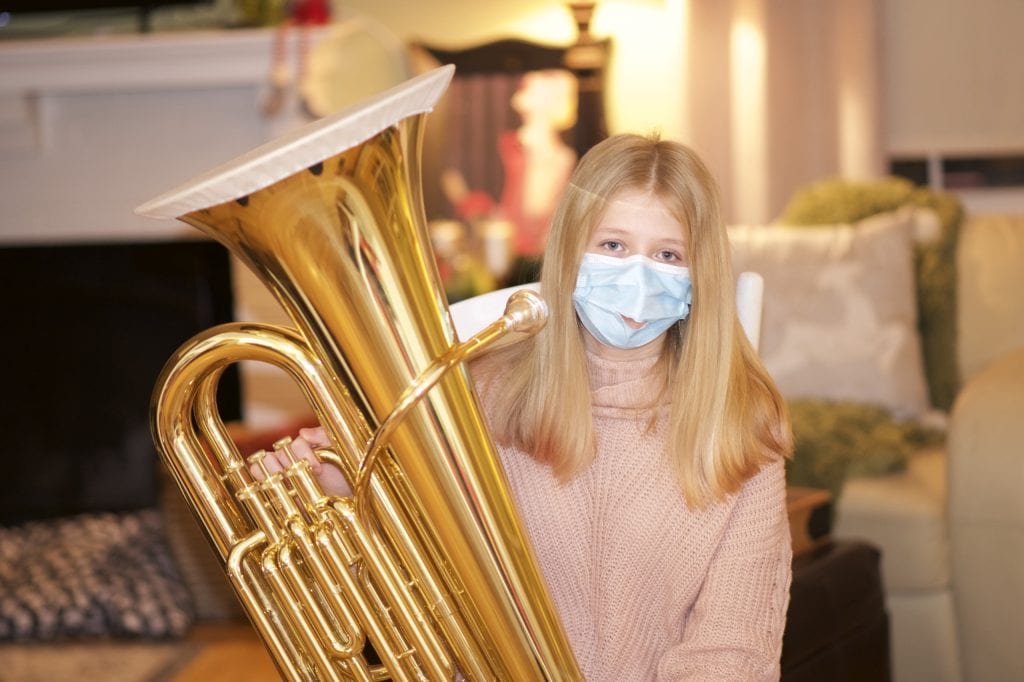
“It was a little tricky getting used to playing tuba with a mask but I eventually got the hang of it. I am just so glad to be back playing music. Ms. Wattel really worked hard to make this happen. I am very grateful to have her as a band instructor, and to live in a town where the arts are a priority,” said Sadie Sindland, freshman at Conard High School. Photo by Shelly Sindland
He added that for every half hour of singing and playing, music teachers allow for 20 minutes of air recirculation to prevent the buildup of aerosols over time.
In addition to the new spacing requirements, students at West Hartford’s secondary schools are in hybrid mode, separated into two groups based on last name.
“We see half of the alphabet and we see them for a week, and then the other half streams. Then they flip-flop the following week,” Antonucci said.
He said a University of Colorado study conducted in conjunction with a number of professional artistic organizations provided the basis for many of Connecticut’s new safety guidelines.
“All these folks went in and they did a big survey about singing and playing, and they came up with the following recommendations,” said Antonucci. “That you should be at least 6 feet apart, that you should have bell covers over the bells of each instrument, and you should have face masks with a slit or a hole in it – a small one – so that there is no aerosol that escapes from the face.”
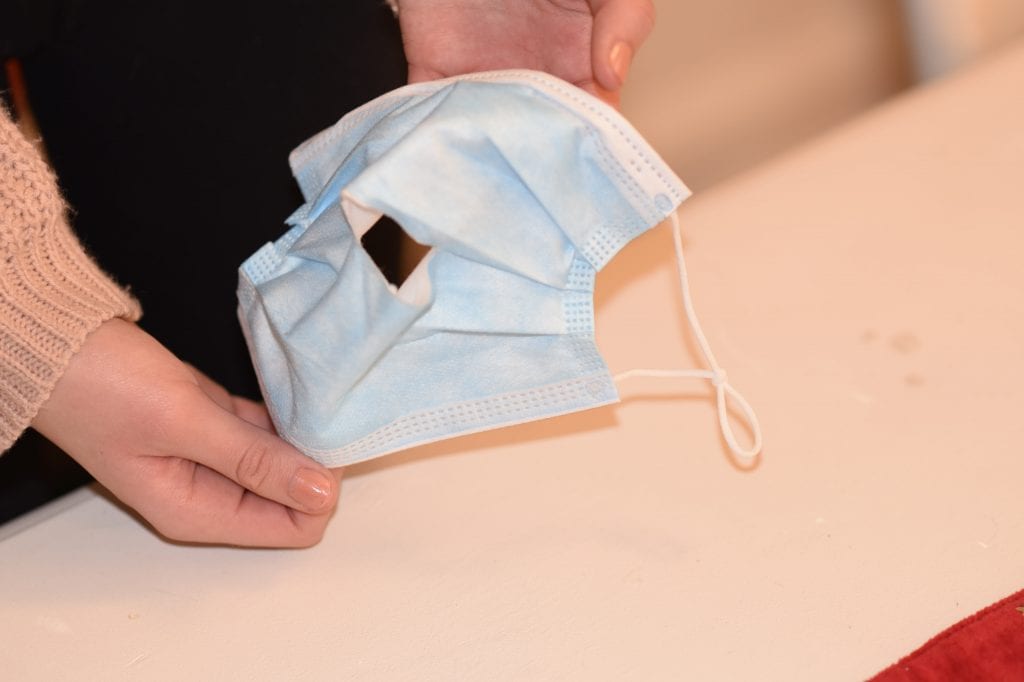
Students still wear masks while playing their instruments, with small holes cut out to provide space for the mouthpieces. Photo by Shelly Sindland
These precautions have had a noticeable impact on the music-making experience, but both Eurich and Antonucci praised their students for adapting admirably to their new reality.
“You take even half cohorts of 20 or 30 people, and now we take up all the seats in the auditorium because every child is 12 feet apart. That’s a very different experience than sitting next to your best friend and playing the clarinet together, or being in the alto section with your best friends next to you,” Antonucci said. “It’s hard for professionals to do that. What we’re doing with the kids is unbelievable – and it’s the kids, not us. The kids are unbelievable in that they’re being flexible and they’re working through this extraordinary circumstance.”
Eurich also commended his students’ capacity to rise to the challenge.
“In a sense, [students] are being basically required to become a little bit more confident in themselves, to put their voice out there to be heard while being 6 feet to 9 feet apart from their neighbors,” said Eurich. “I’ve been seeing individual growth on a level that is not usually found at this point in time of the year, simply because students feel like they really need to step up in order to have the whole group get better and better. And that’s in every class – that’s not just one class or another. In each and every class, the amount of individual student growth has been miraculous to see.”
At both Hall and Conard, music teachers are making a real effort to maintain a sense of community in spite of the increased physical distance between their students.
“You have to create an environment where they talk to each other, and they work with each other, and it’s okay to make mistakes and it’s okay for it to fail,” Antonucci said. “I think [my students] feel the growth. Every period, every time we get to rehearse, they feel that they get better and they learn something. And that’s valuable, even if it’s not happening in a traditional setting.”
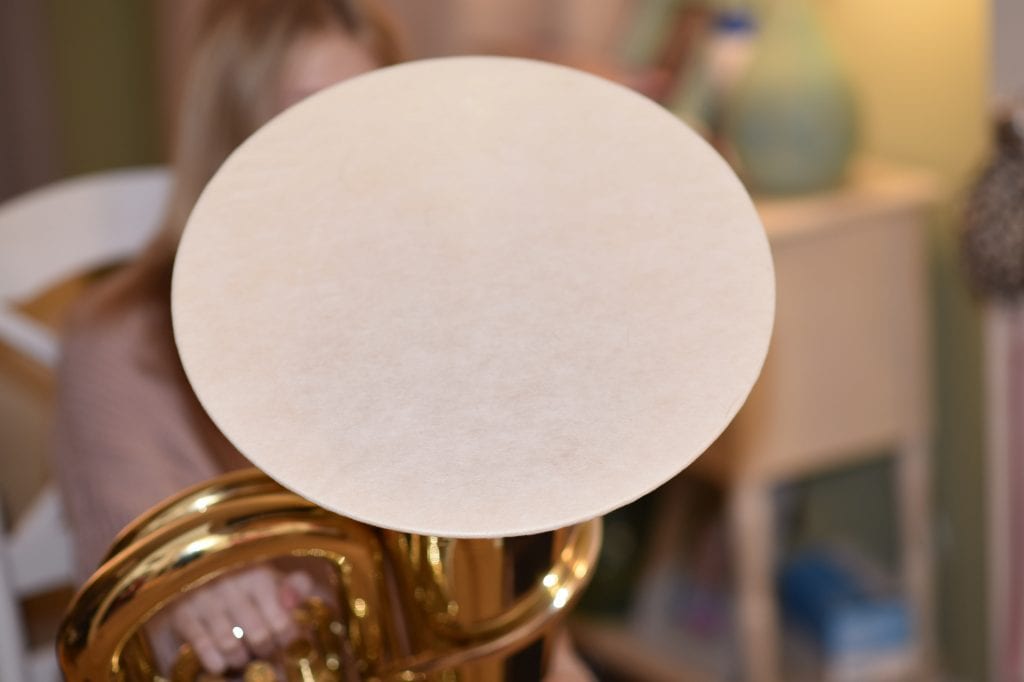
Special bell covers have been added to the instruments to prevent the release of aerosols. Photo by Shelly Sindland
Eurich echoed Antonucci’s belief regarding the importance of developing a supportive atmosphere.
“I am very much supporting all of my students over the course of each and every class and really helping to build them up and try to make them become less afraid to make mistakes,” he said. “If we’re so spaced out and we’re afraid to put ourselves out there, it’s never going to grow, you’re never going to get better. There’s a lot of building up and making sure that everybody feels welcome, safe, and encouraged to grow inside the situation.”
Eurich added that the hardest part of teaching within the new hybrid model has been maintaining a balance between his in-person students and his online students.
“While you have your students that are live, you also have students that are remote, and you’re trying to make sure that you‘re not giving full attention to one or the other,” he said. “You’re trying to make sure you’re engaging each part of your class, one of which is being brought into you via Google Meet, and one of which is right in front of you. That’s definitely the most challenging piece as a performance music class that wants to focus on musical growth and move forward in music, while at the same point in time being very aware of what students who are livestreaming are doing and how they’re reacting to everything as well. There’s a lot of checking for comprehension and giving students the opportunity to ask questions.”
In such troubling times, Antonucci emphasized the underlying importance of coming together to make music.
“Being social is a part of making music. It’s about community, it’s about humanistic connection, and we’re robbed of that right now,” he said. “I mean, let’s be realistic – we’re celebrating human interaction and these wonderful things. It’s a time period where people are losing their jobs, people are getting sick, and we’re incredibly fortunate to be able to be with each other and to make music in any capacity.”
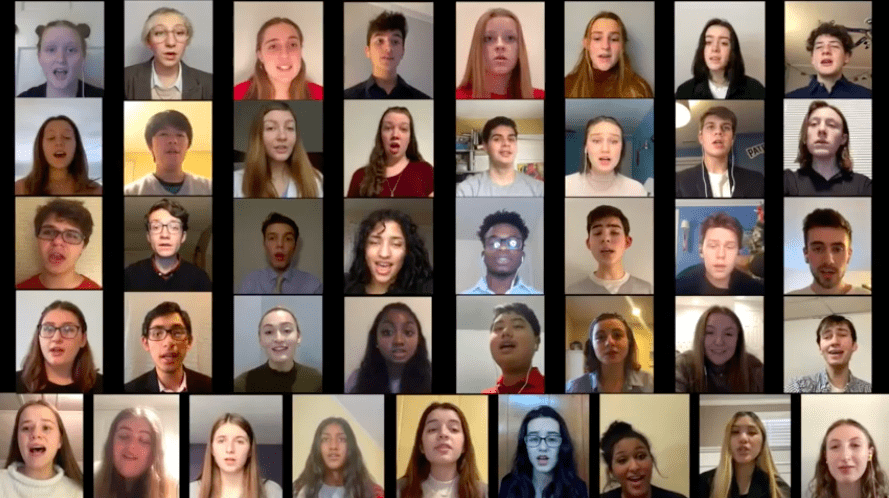
The second verse of ‘Lift Ev’ry Voice and Sing’ was performed virtual by choirs from Conard and Hall high schools. Screenshot (we-ha.com file photo)
Collaboration between music teachers from both high schools has been integral to the success of the music programs during the pandemic.
“I think sometimes in West Hartford we get a little stuck on Conard and Hall, and I think that’s great, it’s a little healthy rivalry. But man, you know – we send out videos online of [Conard music teacher] Mrs. Wattel teaching for my kids, and there’s videos for her kids with me teaching. None of that matters at all,” Antonucci said. “You just can’t do it, you can’t do everything yourself, and so all the teachers are like, ‘Whatever, man. Let’s share everything, let’s talk about everything, let’s plan together, let’s help each other out.’ I think if anything, it will kind of help the kids in the community realize that it’s great to have the north and south and Conard and Hall and red and blue, but none of that really matters. Nobody sees it that way at all.”
Both Eurich and Antonucci said the feedback from the West Hartford community has been overwhelmingly positive.
“I get emails and notes every day from parents offering any help that they can. We just livestreamed for the first time, we made our first little baby step there, and people are celebrating it and can’t wait for everybody to see,” Antonucci said. “When we put out virtual projects last year in the spring, they got thousands of views and everybody was really positive. We got a lot of great feedback from people. It’s such a supportive community.”
Eurich said that for his students, the opportunity to perform again is a hopeful reminder of better days to come. Of the attitude of the music program as a whole, he said, “It is optimistic at all times, it is engaging, it is making sure the students have a difference in their day from being part of another class, that they get to come here and become part of a musical process just like they normally would. It’s that little bit of normalcy which is really driving a lot of our students to really love coming to class.”
Both Antonucci and Eurich emphasized their gratitude for the ability to continue making music with their classes during this unprecedented time.
“Our perspective is we’re so thankful, and this wouldn’t happen without the support of the community, without the support of our school building administrators, our district administrators, and the Board of Ed. It really has to be a group effort. Everybody’s on the same page, everybody’s working hard, and I’m just so appreciative to be in a successful place where everybody truly cares,” said Antonucci. He smiled. “I’m really fortunate and the kids are really fortunate that we’re all here together. Even though it’s a difficult time, we’re really, really lucky.”
For West Hartford’s recent Martin Luther King Day celebration, several collaborations between West Hartford Public Schools choirs took place. Choirs from Conard and Hall high schools appeared in a recording of “Lift E’vry Voice and Sing,” and not only Conard and Hall, but Bristow, King Philip, and Sedgwick middle school choirs collaborated in a virtual singing of “We Shall Overcome.”
Editor’s Note: A version of this article originally appeared in the January 2021 issue of West Hartford LIFE.
Like what you see here? Click here to subscribe to We-Ha’s newsletter so you’ll always be in the know about what’s happening in West Hartford! Click the blue button below to become a supporter of We-Ha.com and our efforts to continue producing quality journalism.


